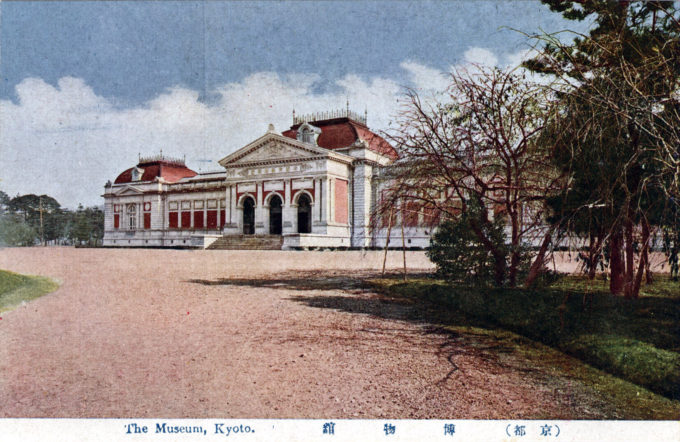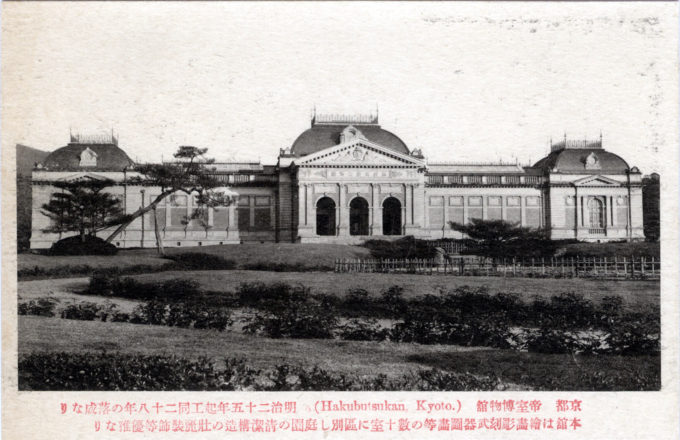See also:
Hakubutsu-kan, Ueno Park, Tokyo, c. 1910
“The Kyoto Imperial Museum of 1895, now part of the Kyoto National Museum, deserves to rank with the Bank of Japan as one of the finest remaining examples of mid-Meiji architecture. Like [Kingo] Tatsuno’s bank, the museum maintains its original function and marks an important step in Japan’s development of an independent modern architecture.
“The exterior, a commanding mass of red brick trimmed with white granite, is often described as neo-Baroque with touches of neoclassicism … Above it rises a cavetto roof, the largest of the seven mansards that give the building the air of Second Empire Paris. The museum is one of the most impressively sites of all Meiji buildings, with a spacious lawn and reflecting pool in front and a decorative west entrance gate.
“… Meiji visitors, entering from the back, were able to see works of art hitherto inaccessible to ordinary Japanese for the small sum of three (later five) sen … Largely doing away with windows, [Katayama Tokuma, who also designed the Akasaka Detached Palace,] adopted the contemporary Western system of illuminating the galleries by natural light from overhead skylights … The Meiji visitor to the Kyoto Imperial Museum would have found is path laid out with the precision of a Prussian schoolmaster: native ceramics, lacquer, and textiles to the north; sculpture to the west; painting and calligraphy to the south; and so on.”
– Meiji Revisited: The Sites of Victorian Japan, by Dallas Finn, 1993
“The Kyoto National Museum, then the Imperial Museum of Kyoto, was proposed, along with the Imperial Museum of Tokyo (Tokyo National Museum) and the Imperial Museum of Nara (Nara National Museum), in 1889, and construction on the museum finished in October, 1895. The museum was opened in 1897. The museum went through a series of name changes – in 1900, changing its name to the Imperial Household Museum of Kyoto; and once more in 1924 to the Imperial Gift Museum of Kyoto. The current name, the Kyoto National Museum, was decided upon in 1952.
“The museum is composed of a redbrick main hall built in 1895 in the French Renaissance style. The main hall was designed by the architect Tokuma Katayama, who contributed greatly to the introduction of Western architecture to Japan.”
– Japan: The Official Guide, Japan National Tourism Organization, 2016



